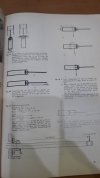Would brake fluid be an option?
More like coolant for your car, it can withstand great heat and it will not freeze over.
However you will need a liquid proof system, and that means gluing and secure with a sort of clamps.
As Greg mentioned those are also not uv resistant, but if they fail after two? years it will cost you 15 euro cents to replace one set
I think it will be the rubber in the syringe that will give up first.(coolant is also very friendly for rubber)
Those hoses will last for 15 years plus in my country, just cheap pond air hose.
But why buy a cheap air compressor if you can buy a cheaper air pump for the pond, i did not think about that one, sorry my mistake.
I just have to make a extra connection with a valve from my pond air pump to the syringes. he is strong enough even a bid to strong?
However i think air is to expensive and to much work/parts for me.
Reading all the comments and do some more digging on those comments i think i will order some switches:
Smarter Shopping, Better Living! Aliexpress.com

www.aliexpress.com
But then "closed circuit ---> press---> break circuit for in between the points and the stock rail and some:
OR:
Smarter Shopping, Better Living! Aliexpress.com

www.aliexpress.com
But then with a longer travel to attach them on the trow bar
The odds are that i dont even need those.
To let the turnout shift. (reverse the polarity)
Smarter Shopping, Better Living! Aliexpress.com

www.aliexpress.com
My throw bar will be a m3 threaded rod that i can attach to my points with some nuts, instead of the alu tube.
The m3 rod will be long enough to stick thru a dc motor:
13.32£ 35% OFF|20 Pieces 3V 12V DC 70mA (3V) Robot Intelligent Car DIY Dual Shaft Gear TT Motor for Robot Car MCU 7x2.2x1.8cm|DC Motor| - AliExpress
With some nuts i can make a linear actuator.
This vid resembles a bit of my idea:
But instead glue a rod on the motor i will stick it thru the axle like i did/do with my loco's.
EDIT: vid not available?
go for: How to make an Electric Linear actuator DC Motor.
It's half the money in relation to a servo with tester per turnout.
The "head" of the motor will be just sticking above the ground plate and will be covered against rain.
Since it is all plastic i am not so worried as long as the motor itself stays dry.
For the "switch panel" i think it will be clever to make a 32 pin old fashion pc connector to it, to store it inside, incl red and green LED's in the lines, so i will know witch switch leads to where.
Yes for a odd point or two you can get away with some simpler ideas, but for what i would like....yikes
With that (pike) fishing wire, very good thinking, i almost run off to a welding shop(mig welding or mag welding wire?)
 trammayo
trammayo
: or buy a "brick layers wire"
 Greg Elmassian
Greg Elmassian
: For the choke cable: the nearest bicycle dealer? .
Thank you very much for all the input and great ideas, it is very helpful
With best regards Igor










